“What is a playa?” “Do playas really recharge the aquifer?” “How much recharge?” “What are the long-term threats to playas?” We often get asked questions like these. To help answer those questions, we use both biological and social science.
We’ve compiled our list of top scientific papers that describe the biological and societal value of playas, their overall and specific threats, and some of the programs that can help restore and conserve these critical wetlands. Due to copyright law, we can only provide the abstracts, but links to download or purchase the full paper are provided.
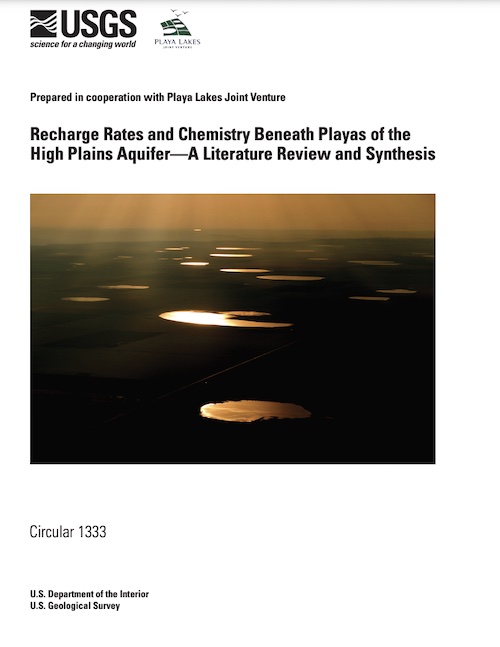
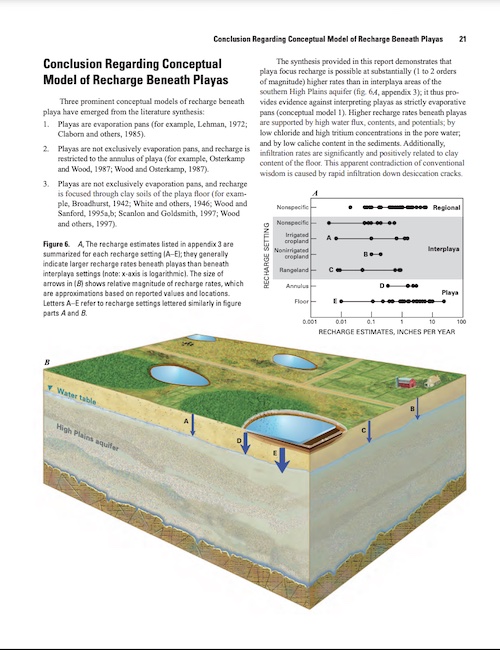
USGS Circular: Recharge Rates and Chemistry Beneath Playas of the High Plains Aquifer — A Literature Review and Synthesis
In this paper on the hydrology of playas, the authors collate findings from 175 publications to synthesize a consistent description of the important recharge processes of the High Plains (Ogallala) aquifer and related hydrological processes of playas. The authors enhance the context of their findings by providing detailed information describing the quantities of water drained from the aquifer in comparison to recharge rates of water filtered through playas. Specific descriptions of the mechanisms that govern aquifer recharge and playa hydrology are illustrated in great detail.
This comprehensive review finds that playas represent faster pathways for aquifer recharge by 1-2 orders of magnitude than more impermeable interplaya areas, such as cropland. “The physical characteristics of playas that have apparent influence on recharge rates are the drainage area, playa volume, depth of the playa floor, vertical extent of shrink- and-swell clay that lines playa floors, depth of sediment overlying clay-lined floors, unsaturated-zone sediments underlying the playa, and depth to the water table.” Accumulated sediments in playas reduce recharge rates.
Gurdak, J.J., and Roe, C.D. (2009). Recharge rates and chemistry beneath playas of the High Plains aquifer—A literature review and synthesis: U.S. Geological Survey Circular 1333, 39 p. View publication >>
In November 2015, we held a Playa Recharge Summit with 14 scientists and researchers who study various aspects of the playa ecosystem to determine what was known about groundwater recharge through playas. The experts agreed that playas recharge the aquifer at the rates described in this publication.
Understanding Playas: Value, Threats, and Restoration
The Importance of Playa Wetlands to Biodiversity of the Southern High Plains
This paper details the benefits to biodiversity bestowed upon the Southern High Plains by playas. The Southern High Plains have been described as “the largest featureless level landscape in North America,” with playas often representing the only noteworthy feature present across this expanse. As such, playas provide a rich accumulation of nutrients and variable habitat resulting in their status as a premier source of biodiversity in the region. Species richness extends to mammals, birds, reptiles, invertebrates, and plants. The authors also provide a detailed account of the formation and status of these ephemeral wetlands, starting with the formation of the plains millions of years ago and continuing through the creation of the watersheds that feed playas with runoff from precipitation to the current threats to playas attributed to expansive conversion of the plains to cropland and grazing areas. While the information contained in this article has been updated since its publication in 1994, this article remains one of the most highly cited publications detailing playas to date.
Haukos, D. A., & Smith, L. M. (1994). The importance of playa wetlands to biodiversity of the Southern High Plains. Landscape and Urban Planning, 28, 83–98. View publication.
Protein and Energy Production in Playas: Implications for Migratory Bird Management
In this publication, energy production of playas is examined and quantified in terms of seed and invertebrate production. This energy production is compared between managed and unmanaged wetlands to provide clear management recommendations to increase the number of duck energy days produced per playa. Duck energy days, the amount of energy used to sustain one duck for one day, are explored and used to refocus conservation on bird population management. The idea of duck energy days is one highly valued and used by PLJV.
Anderson, J.T., Smith, L.M. (1998). Protein and energy production in playas: Implications for migratory bird management. Wetlands 18, 437–446. View publication.
Influence of Land-use and Conservation Programs on Wetland Plant Communities of the Semiarid United States Great Plains
There are numerous programs designed to protect and conserve playas; this paper reviews the effects of one of the most prodigious of these programs, the USDA Conservation Reserve Program (CRP), which provides monetary landowner incentives for planting perennial non-crop cover on highly erodible lands. While the program has encouraged conservation of wetlands and has resulted in an improvement in wetland water retention in comparison to non-CRP influenced cropland playas, the non-native perennial tall grass species propagated by the CRP reduce runoff and inundation to playas as compared to playas populated with native shortgrass species. The authors also make a strong case for the prohibition of plowing playas when they are dry.
O’Connell, J. L., Johnson, L. A., Smith, L. M., Mcmurry, S. T., & Haukos, D. A. (2012). Influence of land-use and conservation programs on wetland plant communities of the semiarid United States Great Plains. Biological Conservation, 146, 108–115. View publication.
Ecosystem Services Provided By Playa Wetlands in the High Plains: Potential Influences of USDA Conservation Programs and Practices
This publication provides an overview of the ecological services playas provide to their ecosystems: increased plant and animal biodiversity, support for millions of migrating birds, and floodwater attenuation to name a few. The authors detail existing government programs that have been used or were created to facilitate the conservation of wetlands in cropland and prairie areas. The benefits and drawbacks of these programs are discussed, with a focal point being the injurious effects of planting tall non-native grasses around playas as a method of conservation. The growth characteristic of non-native grasses (their height and tendency to grow more densely than native species, primarily) result in decreased runoff and water accumulation in playas. Adverse impacts of sediment accumulation attributed to agricultural activity are also detailed. Recommendations for future conservation efforts are offered, focusing primarily on the planting of native shortgrass species in the place of non-native grasses, the creation of a native grass buffer zone around playa perimeters, and the removal of accumulated sediment.
Smith, L., Haukos, D., McMurry, S., LaGrange, T., & Willis, D. (2010). Ecosystem Services Provided By Playa Wetlands in the High Plains: Potential Influences of USDA Conservation Programs and Practices. Ecological Applications, 21(3), 82–92. View publication.
Physical Loss and Modification of Southern Great Plains Playas
This paper investigates the rapid loss of playas that has taken place in the Southern Great Plains over the nearly four decades prior to its publication. Between 1970 and 2008, 38% of playas were found to have been lost; that is a 1% annual rate of loss of all playas in the study area. This loss is primarily caused by modification and destruction of playas to facilitate conversion to cropland and grazing area. A pervasive cause of playa loss is the accumulation of sediment brought into playas from developed cropland. This layer of sediment accumulates on top of the hydric soils and clay underlayer at the bottom of the playa, reducing production by inhabitants and inundation to the aquifer. The physical loss of playas due to sediment accumulation covering and filling the wetland basin is estimated to be 14,607 playas. Playas are further injured by intentional modifications, the most common being pitting, trenching, or tilling. All three of these modifications dramatically alter the hydrological properties of playas, which are their most defining features. The article concludes with a summary of the dire situation for playas, and a call for better legislation aimed at safeguarding playas against future modification and extirpation.
Johnson, L. A., Haukos, D. A., Smith, L. M., & McMurry, S. T. (2012). Physical loss and modification of Southern Great Plains playas. Journal of Environmental Management, 112, 275–283. View publication.
Effects of Sedimentation on Playa Wetland Volume
This article details the effects of cropland on sediment accumulation in playas in the Southern High Plains, with suggestions for conservation strategies to prevent further damage. Sediment buildup is greater in playas whose watershed is dominated by cropland as compared to rangeland. When surveyed, 18 of 20 playas in cropland-dominated watersheds had lost all of their original basin volume. The rangeland playas also experienced increased sediment accumulation due to nearby cropland cultivation. Comparison to a purely rangeland watershed was not possible due to the heavy cultivation of the area.
Luo, H. R., Smith, L. M., Allen, B. L., & Haukos, D. A. (1997). Effects of sedimentation on playa wetland volume. Ecological Applications, 7(1), 247–252. View publication.
Sedimentation of Nebraska’s Playa Wetlands: A Review of Current Knowledge and Issues
While technically not a peer reviewed article, this report well summarizes the current understanding of sedimentation of playas. The effects and mechanisms of sediment accumulation are well documented and shown with pictures that provide valuable context to the more general explanations of the ecological principles at hand. In addition, the authors describe Nebraska’s playas, summarize data on historical and recent wetland soil profiles, describe the impact that culturally accelerated sedimentation has on numerous wetland functions, and provide recommendations on restoration approaches.
LaGrange, T.G., R. Stutheit, M. Gilbert, D. Shurtliff, and P.M. Whited (2011). Sedimentation of Nebraska’s Playa Wetlands: A Review of Current Knowledge and Issues. Nebraska Game and Parks Commission, Lincoln. 62 pages. View publication.
Ecosystem Services Provided by Waterbirds
This article does an excellent job of providing one thing many more general articles about specific components of conservation lack: context. The authors examine the conservation of waterbirds in the context of the ecosystem services provided by these birds and provide economic values for easier understanding of the actual value of these ecosystem services. Key services investigated include cultural services such as birding tourism, harvest value from hunting and farming, support of biodiversity of non-avian taxa, their use as bioindicators of ecosystem health and general disease surveillance, nutrient cycling, and pest control. By providing a value to these services, playa conservation programs that positively impact waterbird populations can make a stronger argument for the need to implement conservation efforts.
Green, A. J., & Elmberg, J. (2014). Ecosystem services provided by waterbirds. Biological Reviews, 89(1), 105–122. View publication.
The Empirics of Wetland Valuation: A Comprehensive Summary and a Meta-analysis of the Literature
While not a paper that strictly deals with playas, this paper provides an exhaustive meta-analysis of work done to empirically value wetlands in the 25 years preceding its publication. This valuation provides information useful to those who would make a case for the non-biological benefits for wetland restoration worldwide. While the broad scope of this article precludes it from providing a strict valuation of individual wetlands, it lays out why wetlands should be valued for more than just the biological benefits they provide. These values are broken down by activity component, which presents a useful comparison for which pieces provide the greatest value to a wetland.
Brander, L. M., Florax, R. J. G. M., & Vermaat, J. E. (2006). The empirics of wetland valuation: A comprehensive summary and a meta-analysis of the literature. Environmental and Resource Economics, 33(2), 223–250. View publication.
2006 Landowner Survey
In 2006, PLJV worked with social scientists to conduct a survey of 1,800 landowners in the western Great Plains with the purpose of determining the baseline of landowner knowledge of playas and their willingness to conduct conservation work. The survey found that most landowners with playas on their properties are willing to conserve them, with many saying the wetlands are a positive presence on the land, primarily because they attract wildlife.
About 50% of landowners did not know whether or not playas recharged groundwater, when in fact playas are a primary source of recharge for the aquifer.
Survey data revealed that although landowners are concerned about the future of the Ogallala Aquifer, not all understand playas’ crucial role in groundwater recharge. Of 13 possible resources that might warrant additional conservation effort, landowners said they supported ‘more conservation than now’ for only one — the Ogallala Aquifer. However, about 50% of landowners did not know whether or not playas recharged groundwater, when in fact playas are a primary source of recharge for the aquifer (see USGS Circular: Recharge Rates and Chemistry Beneath Playas Literature Review).
This key piece of information changed how we communicated about playas. We realized that aquifer recharge was relevant and important to landowners, but they didn’t know about or understand playas role in providing it. So, for the next ten years, we focused our communication messages around playas and aquifer recharge — promoting it through film, electronic newsletters, flyers, websites, and the Playa Country radio show.
View the executive summary or full report.

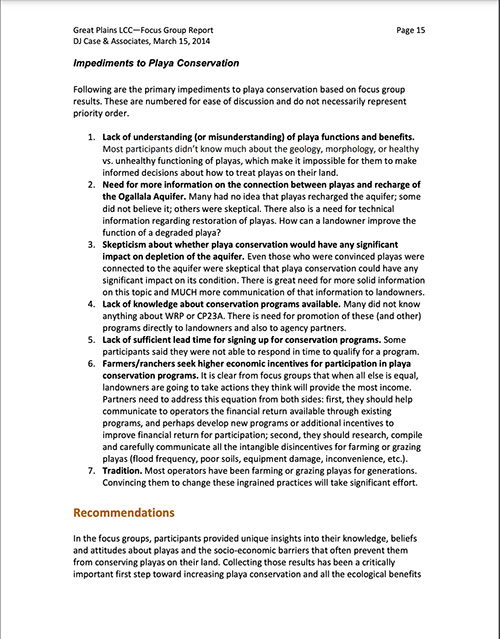
2013 Focus Groups with Playa Owners
In 2013, PLJV conducted 13 focus groups with farmers and ranchers in the six states throughout our region. The goal of this research was to better understand landowner attitudes and opinions about playa conservation (with emphasis on impediments to conservation behaviors) to inform agencies’ strategies to encourage and enhance conservation of playas on private lands.
By conducting focus groups with landowners in target areas, researchers were able to focus on issues and topics that emerged in the 2006 survey of landowners in the Playa Lakes region, probing key socioeconomic impediments that discourage landowners from enrolling in conservation programs or restoring playas, and then recommending strategies for overcoming these reservations. Representatives from the Playa Lakes and Rainwater Basin Joint Ventures and their partners coordinated recruitment of participants, with a total of 72 producers who have playas on their land in attendance. The informal and relaxed atmosphere of these smaller gatherings provided powerful insights for future communications and conservation efforts.
The results were used to design a new playa conservation program, the USDA Migratory Birds, Butterflies, and Pollinators Habitat State Acres for Wildlife Enhancement (Migratory Birds SAFE) practice, which provides private landowners an innovative, market-based financial incentive for restoring playas and planting a native grass upland buffer strip. Using a reverse auction, landowners in Kansas and Nebraska can submit an offer for the amount they are willing to accept as an annual payment through the USDA Conservation Reserve Program. The Migratory Birds SAFE has been very successful, with more than 12,800 acres accepted in the first two ranking periods. In Kansas, more acres of playas and buffers were enrolled in the Migratory Birds SAFE in 17 months than were enrolled in other USDA playa conservation programs during the previous 25 years.
2015 Playa Recharge Summit
Playas recharge the Ogallala Aquifer — that is the message PLJV has been promoting since the 2009 landowner survey (see above). As a result, producers are more aware of the connection and have started asking specific questions about aquifer recharge before deciding how to manage their playas. During the 2013 focus group conversations, we found that landowners want to know how much groundwater recharge goes through playas, how long till it reaches the aquifer, and if that water will benefit them directly.
While the recharge rate is not fast enough to counter the amount of withdrawals due to irrigation, it can support dryland crop production or grazing systems, as well as towns that depend on the aquifer.
To answer these questions and others, we held a Playa Recharge Summit in 2015 to discuss the link between playas and the aquifer with 14 scientists and researchers who study various aspects of playas including hydrology, wildlife ecology, economics and communications. During the meeting, the participants came to agreement on how to answer landowners’ questions based on the most recent scientific knowledge.
The experts agreed that while the recharge rate is not fast enough to counter the amount of withdrawals due to irrigation agriculture, it can support farmers and ranchers with rainfed (dryland) crop production or grazing systems, as well as municipalities that depend on the aquifer. This was another turning point in our approach to playa conservation and outreach. We are now working with communities to incorporate playa restoration into sustainable water plans.
Download our Communicating About Playas and Recharge Tip Sheet that was developed as a result of the Playa Recharge Summit, and read our messaging on What the Scientists Say about Groundwater Recharge through Playas.
2019 Migratory Birds SAFE Evaluation
As described above, the results of the 2013 Focus Groups were used to design a new innovative practice under the USDA Conservation Reserve Program, the Migratory Birds, Butterflies, and Pollinators Habitat State Acres for Wildlife Enhancement (Migratory Birds SAFE) practice. As with any new program or approach, it is important to evaluate how it works for producers and make adjustments as needed.
To help USDA and conservation delivery partners evaluate the pilot program and shape the evolution of the program, PLJV collaborated with Kansas Department of Wildlife and Parks private lands biologists to conduct semi-structured interviews with 32 producers about their experiences signing up for the program, satisfaction with the process, and suggestions for improvement. By identifying a timely need, we were able to have frank conversations with 32 producers and generate a summary of lessons learned for our USDA partners in time to shape the evolution of the program.
Through this effort, we learned that strategies to set a bid price varied widely and that producers were eager for more transparency and predictability in the process. Overall, producers felt that final payment rates reflected their costs to take land out of production and offered an attractive way to leave a legacy, and many hoped to enroll more acres in the future.

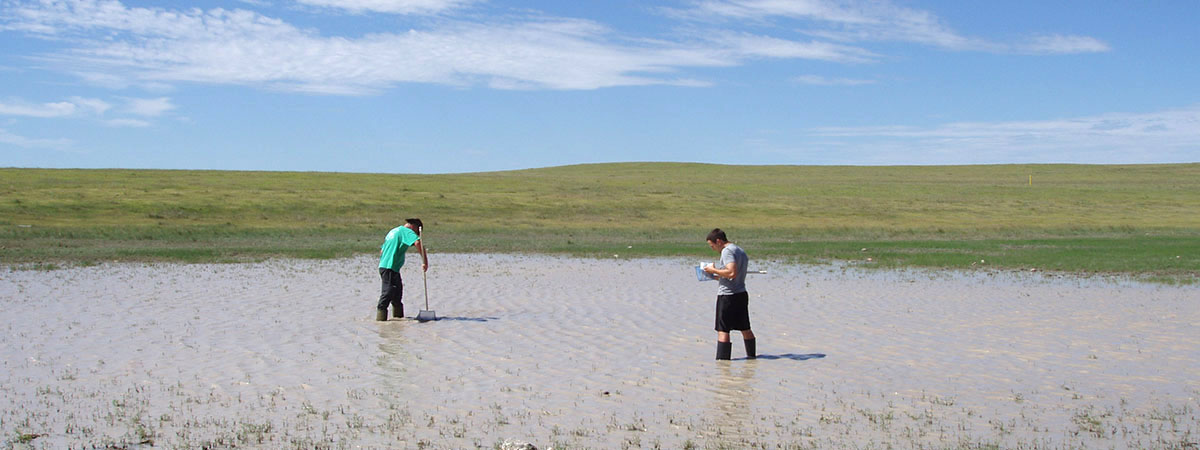
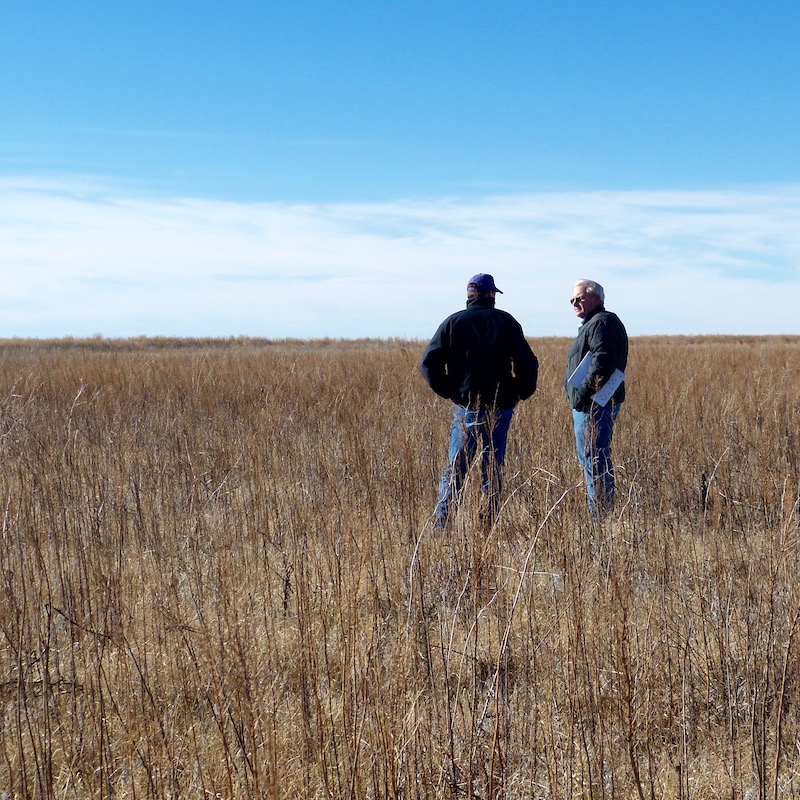
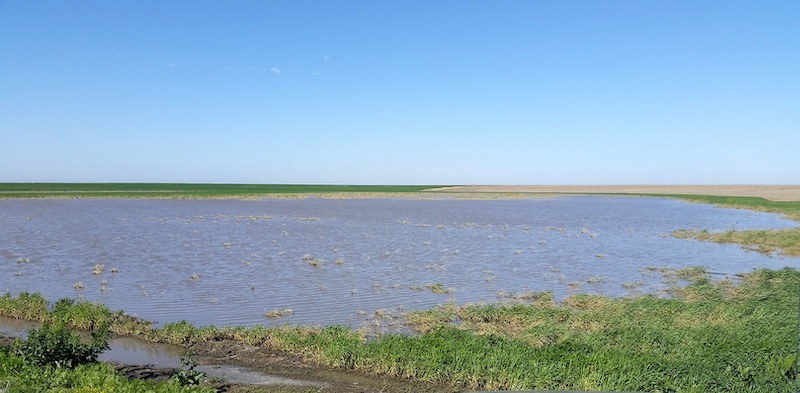
Conservation Social Science
Social science information is also an important part of our playa conservation work. It helps the partnership develop conservation programs that benefit both people and natural resources and increases the relevance and effectiveness of conservation outreach messages for landowners, producers, and local community members.
Conservation social science broadly relates to understanding how people think about and relate to natural resource issues and management using multiple disciplines including economics, sociology, psychology, geography, anthropology, political science, and communications. Within those disciplines, there are a number of quantitative (surveys, stakeholder evaluations, demographic assessments, land use trends) and qualitative tools (focus groups and interviews), and other methods such as economic modeling and decision analyses.
Below are some social science studies that have been used to inform playa conservation efforts in the PLJV region.